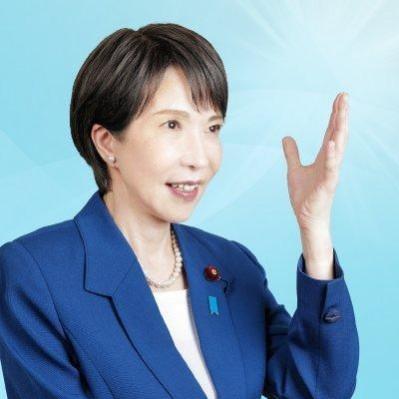
In the marbled halls of Tokyo's Liberal Democratic Party headquarters, history cracked open like a fault line on October 4, 2025. Sanae Takaichi, a 64-year-old firebrand whose political DNA is woven from the threads of Shinzo Abe's unyielding nationalism, clinched the party's presidency in a nail-biting runoff. With 185 votes to Shinjiro Koizumi's 156, she toppled the scion of a political dynasty and positioned herself to shatter Japan's glass ceiling as the nation's first female prime minister. A parliamentary vote in mid-October will almost certainly confirm her ascent, given the LDP's enduring stranglehold on the lower house despite recent electoral tremors. But this is no feel-good milestone of progressive feminism. Takaichi's triumph signals a seismic pivot: a hardline conservative vaulting to the helm of the world's fourth-largest economy, vowing to resurrect Abenomics, fortify alliances against Beijing's shadow, and revive a Japan First ethos that flirts with isolationism even as it sharpens Tokyo's sword.
A Non-Hereditary Ascent
Takaichi's victory is a mirror to Japan's soul fractured, defiant, and teetering between revival and rupture. Born in Nara Prefecture to a police officer mother and an auto worker father, she embodies a rare non-hereditary ascent in a political aristocracy where bloodlines like the Koizumis reign supreme. No silver spoon here; her path was forged in the fires of intellectual curiosity and cultural immersion. A Kobe University graduate, she spent formative years in the U.S., clerking for Democratic Congresswoman Patricia Schroeder amid the 1980s trade wars that pitted Tokyo's export machine against Washington's protectionism. Returning home, she morphed from TV anchor co-hosting a program with future opposition firebrand Renhō to legislative aide, then independent candidate. Elected to the House of Representatives in 1993, she joined the LDP three years later, rising as Abe's protégé: minister of internal affairs, economic security chief, and a vocal guardian of his legacy.
A Thatcherite Vision
Her worldview? Unapologetically Thatcherite. The Iron Lady of Westminster is her lodestar a symbol of resolute conservatism that blends free-market zeal with cultural chauvinism. Domestically, Takaichi champions Abenomics 2.0: aggressive monetary easing, fiscal largesse to combat deflation's ghost, and tax cuts to jolt consumer spending from its torpor. Yet her social conservatism cuts deeper, often alienating the very women whose milestone she represents. She opposes same-sex marriage, dual surnames for couples, and female imperial succession, framing them as existential threats to Japan's traditional family system. As LDP policy chief, she once floated revoking broadcasters' licenses for politically biased coverage a chilling echo of state media control that drew free-speech howls. And her Yasukuni Shrine pilgrimages? They are ritual provocations, honoring war criminals in a site that still festers old wounds with Seoul and Beijing.
A Party in Crisis
This is the woman now poised to lead. Her election wasn't a coronation; it was a rebellion. The LDP, that postwar behemoth governing nearly uninterrupted since 1955, has been bloodied by scandal and hubris. Slush funds siphoned from party fundraisers tens of millions of yen funneled into shadowy coffers ignited public fury, costing the coalition its majorities in both Diet houses during 2024's snap election and July 2025's upper-house drubbing. Shigeru Ishiba, the moderate who ousted her in last year's leadership race, lasted a mere year before resigning amid the wreckage, his tariff truce with Trump (capping U.S. levies at 15% in exchange for Japanese investments) a lone bright spot in a sea of voter revolt. Rising prices, stagnant wages, and an aging populace Japan's median age now 49, with births plummeting below 700,000 annually fueled the backlash, splintering opposition but eroding LDP trust.
A Rightward Lurch
Takaichi's win is the party's desperate lunge rightward, a bid to reclaim the disaffected conservatives flocking to upstarts like Sanseitō, whose leader Sohei Kamiya crowed that his party's surge forced the LDP's shift back to the Right. In the first round, no candidate cracked a majority among 295 lawmakers and chapter delegates; the runoff distilled the divide: Takaichi's 149 lawmaker votes and 36 from prefectures edged Koizumi's 145 and 11. It reflected a grassroots roar party members, weary of scandals and softness, anointed the hawk who vows to transform anxieties into hope. Yet for moderates, it's a pyrrhic thrill: her nationalism risks alienating the center, where immigration unease simmers but economic pain demands pragmatism.
A Bittersweet Gender Milestone
The gender triumph cuts bittersweet. Japan languishes 125th in the World Economic Forum's gender parity index, with women holding just 10% of Diet seats and facing a Madonna penalty for motherhood. Takaichi's ascent eschewing work-life balance for proper modesty and all-nighters feels less like empowerment than endurance. She pledges Nordic-level female cabinet representation, but her track record prioritizes fertility subsidies over structural reform, reinforcing women as vessels for demographic salvation rather than equals in boardrooms or barracks. As one Tokyo voter noted, I have expectations but her nationalist comments worry me. Yuki Tsuji, a Tokai University gender expert, dismisses her as having no interest in women's rights. This first may inspire, but it indicts: a conservative woman breaking barriers not by dismantling patriarchy, but by mastering its rules.
Formidable Challenges
Takaichi faces formidable challenges that threaten to undermine her leadership from the outset. The LDP's weakened grip on the Diet, lacking a majority, forces her into uneasy coalitions with Komeito and fragmented opposition parties, a delicate balancing act that could stall her agenda. Public trust, battered by the slush fund scandal and economic malaise, demands deft handling to avoid further voter alienation. Her hardline stances, particularly on historical revisionism and Yasukuni visits, risk inflaming tensions with China and South Korea, potentially isolating Japan diplomatically at a time when regional stability is precarious. Internally, she must navigate factional rifts within the LDP, where moderates and Ishiba loyalists may resist her nationalist pivot, threatening party unity. Her lack of appeal to younger, urban voters, who lean toward progressive reforms, could further erode the LDP's base if she fails to broaden her platform beyond conservative dogma.
Economic Strengthening Strategy
Economically, Takaichi's vision hinges on reinvigorating Japan's stagnant economy through a bold revival of Abenomics. Her strategy emphasizes aggressive monetary easing by the Bank of Japan to weaken the yen, boosting exports, alongside targeted tax cuts to stimulate consumer spending. She aims to address the 11 million job vacancies projected by 2030 by incentivizing automation and reskilling programs, though her restrictive immigration stance may exacerbate labor shortages in critical sectors like healthcare and construction. To counter inflation, now at 3%, she proposes supply-side reforms, including deregulation to spur innovation in tech and green energy. However, with Japan's debt-to-GDP ratio at 260%, her fiscal expansion risks spooking bond markets, potentially forcing a delicate pivot to austerity if yields spike. Balancing these priorities while restoring real wage growth, stagnant for decades, will test her economic acumen and ability to deliver tangible relief to a weary populace.
Geostrategic Policy Restructuring
Geostrategically, Takaichi's hawkish posture signals a muscular restructuring of Japan's global stance. She prioritizes a quasi-security alliance with Taiwan, deepening tech and defense cooperation to counter China's growing assertiveness in the Indo-Pacific. Her commitment to the Quad alliance aims to fortify a counterweight to Beijing, with increased joint military drills and intelligence sharing. Revising Article 9 to formalize the Self-Defense Forces and boosting defense spending to 2% of GDP reflect her intent to project power amid North Korean provocations and Russian incursions. Yet, her revisionist historical narrative risks diplomatic blowback, potentially undermining alliances with Seoul and complicating ASEAN partnerships. Her upcoming summit with Trump will be pivotal, as she seeks to preserve Ishiba's tariff deal while navigating demands for greater contributions to U.S. basing costs. This assertive geostrategy could elevate Japan's regional clout but risks escalating tensions if not tempered with diplomatic finesse.
A Stormy Dawn
Takaichi's era dawns not as a gentle dawn, but a storm front. She made history for the LDP, quipping the party's scenery will change a little from the president's chair. Indeed: a woman wielding conservative thunder, potentially galvanizing a nation adrift. But in echoing Thatcher's divisive legacy economic verve laced with social austerity Takaichi risks deepening divides. Japan craves stability amid global tempests: Trump's tariffs, Xi's assertiveness, climate furies. If she channels anxieties into resolve, fortifying alliances without fanning flames, she could redefine Tokyo's global heft. Fail, and her milestone becomes mausoleum.
Japan's Gamble
As users buzz Kamiya claiming credit for the rightward lurch, students hailing her as social mobility's beacon this is Japan's gamble. A Thatcher in kimono, poised to either mend the archipelago's fractures or widen them. The world and her neighbors watches with bated breath. In the land of the rising sun, the dawn breaks fierce.
[Major General Dr. Dilawar Singh, IAV, is a distinguished strategist having held senior positions in technology, defence, and corporate governance. He serves on global boards and advises on leadership, emerging technologies, and strategic affairs, with a focus on aligning India's interests in the evolving global technological order.]













